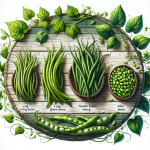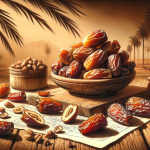Types Of Gin
Gin is a popular spirit that has been enjoyed for centuries. It is a distilled alcoholic beverage that is flavored with juniper berries and other botanicals. Gin is a versatile spirit that can be enjoyed on its own or used as a base for a variety of cocktails.
There are many different types of gin available, each with its own unique flavor profile. Some of the most popular types of gin include London Dry, Plymouth, Old Tom, and Genever. Each type of gin is made using different methods and ingredients, which gives them their distinct flavor and aroma.
Whether you are a gin aficionado or a casual drinker, understanding the different types of gin can help you select the perfect bottle for your tastes. In this article, we will explore the history and origins of gin, the production process, and the different types of gin available. We will also provide tips on how to select and taste gin, as well as some cocktail recipes to try at home.
Key Takeaways
- Gin is a popular spirit that is flavored with juniper berries and other botanicals.
- There are several different types of gin available, each with its own unique flavor profile.
- Understanding the different types of gin can help you select the perfect bottle for your tastes.
History and Origins

Gin has a rich history that dates back to the Middle Ages. It originated in Holland, where it was known as genever or jenever. Genever was originally produced by distilling malt wine, which is made from fermented grains, such as rye, wheat, or barley. The resulting spirit was then flavored with juniper berries and other botanicals.
The Evolution of Gin
Over time, gin evolved from genever and became a popular drink in England. In the early 18th century, the British government passed a series of laws that made gin production and consumption more accessible to the general public. This led to a surge in gin consumption, which eventually became known as the “Gin Craze.”
Genever and Its Influence
Genever, the predecessor of gin, is still produced in Holland today. It is a protected product under European Union law and can only be produced in certain regions of Holland. Genever is typically made using a blend of malt wine and neutral grain spirits, which are then flavored with juniper berries and other botanicals.
The influence of genever can still be seen in modern gin production. Many gin producers use malted grains in their recipes, which gives their gin a unique flavor profile. In addition, some gin producers use genever as a base for their gin, which gives their gin a more traditional flavor.
Overall, gin has a rich history and has evolved over time to become a popular drink around the world. Its origins in Holland and its connection to genever continue to influence modern gin production.
Gin Production
Distillation Methods
Gin is a distilled spirit that is made by redistilling a neutral spirit with botanicals. The two main methods of gin distillation are the “steep and boil method” and the “vapor infusion method.” The steep and boil method involves steeping the botanicals in the neutral spirit and then boiling the mixture to extract the flavors. The vapor infusion method involves placing the botanicals in a basket above the boiling spirit, allowing the vapor to pass through the botanicals and extract their flavors.
Botanicals and Flavoring
Juniper berries are the primary botanical used in gin production. Other botanicals commonly used include citrus peel, angelica root, orris root, and licorice. The combination of botanicals used in gin production gives each type of gin its unique flavor profile. For example, London Dry gin has a strong juniper flavor with citrus and spice notes, while Old Tom gin is sweeter and has a more complex flavor profile.
Aging Process
Most types of gin are not aged, as aging can change the flavor profile of the gin and make it less suitable for use in cocktails. However, some types of gin, such as barrel-aged gin, are aged in oak barrels to give them a smoother, more complex flavor. The aging process can also add notes of vanilla, caramel, and spice to the gin.
In conclusion, gin production involves distilling a neutral spirit with botanicals to create a unique flavor profile. The choice of botanicals and the distillation method used can greatly impact the flavor of the gin. While most types of gin are not aged, some are aged in oak barrels to add complexity to the flavor profile.
Types of Gin
Gin is a versatile spirit that can be enjoyed in a variety of ways. There are several types of gin, each with its own unique flavor profile. In this section, we will explore the most popular types of gin.
London Dry Gin
London Dry Gin is the most popular type of gin. It is a type of dry gin that is made by distilling a neutral grain spirit with botanicals, including juniper berries. The name “London Dry” does not refer to the origin of the gin, but rather to the process used to make it. This type of gin is known for its strong juniper flavor and is often used in classic cocktails like the Gin and Tonic and the Martini.
Plymouth Gin
Plymouth Gin is a type of gin that is made in the town of Plymouth, England. It is a style of London Dry gin, but it has a slightly different flavor profile. Plymouth Gin is made with a unique blend of seven botanicals, including juniper berries, coriander, and cardamom. It has a slightly sweeter taste than London Dry Gin and is often used in cocktails like the Negroni.
Old Tom Gin
Old Tom Gin is a type of gin that was popular in the 18th and 19th centuries. It is a sweetened gin that is made by adding sugar to the botanicals during the distillation process. Old Tom Gin has a unique flavor profile that is slightly sweeter than London Dry Gin, but not as sweet as Genever. It is often used in classic cocktails like the Tom Collins.
Gin Variants
There are several other types of gin that are gaining popularity in the market. These include Navy Strength Gin, Sloe Gin, Contemporary Gin, New Western Gin, Aged Gin, and Barrel-Aged Gin.
Navy Strength Gin is a type of gin that is bottled at a higher proof than traditional gin. Sloe Gin is a type of gin that is made by infusing gin with sloe berries. Contemporary Gin is a type of gin that is made with non-traditional botanicals, such as cucumber or rose petals. New Western Gin is a type of gin that is made with a variety of non-traditional botanicals, such as citrus or spices. Aged Gin is a type of gin that is aged in barrels, similar to whiskey. Barrel-Aged Gin is a type of gin that is aged in oak barrels to give it a unique flavor profile.
In conclusion, gin is a versatile spirit that can be enjoyed in a variety of ways. There are several types of gin, each with its own unique flavor profile. Whether you prefer a classic London Dry Gin or a more contemporary gin variant, there is a type of gin for everyone.
Gin in Cocktails
Gin is a versatile spirit that is often used in classic and contemporary cocktails. Whether you prefer a classic gin martini or a modern gin and tonic, there are many ways to enjoy this popular spirit.
Classic Gin Cocktails
Some of the most famous gin cocktails are classic drinks that have been enjoyed for decades. The Negroni, for example, is a popular Italian aperitif that combines gin, sweet vermouth, and Campari. Another classic cocktail is the Tom Collins, which is made with gin, lemon juice, sugar, and soda water. The French 75 is another classic gin cocktail that combines gin, lemon juice, sugar, and champagne.
Contemporary Mixes
In recent years, bartenders have been experimenting with new and exciting ways to use gin in cocktails. One popular contemporary mix is the gin gimlet, which combines gin and lime juice. Another modern gin cocktail is the Corpse Reviver #2, which combines gin, lemon juice, Cointreau, and Lillet Blanc.
Gin Pairings and Garnishes
When it comes to pairing gin with other ingredients, there are many possibilities. Gin and tonic is a classic combination that has been enjoyed for centuries. Other popular gin pairings include grapefruit juice, cucumber, and elderflower. When it comes to garnishing gin cocktails, options include lemon twists, olives, and herbs like rosemary and thyme.
Overall, gin is a versatile spirit that can be enjoyed in a wide range of cocktails. Whether you prefer classic drinks or modern mixes, there is a gin cocktail for everyone. As the Savoy Cocktail Book says, “The gin and tonic has saved more Englishmen’s lives, and minds, than all the doctors in the Empire.”
Selecting and Tasting Gin
When it comes to selecting and tasting gin, there are a few key things to keep in mind. Understanding ABV and labels, taste profiles and nuances, and gin tasting guidelines can help you find the perfect gin for your preferences.
Understanding ABV and Labels
ABV, or alcohol by volume, is an important factor to consider when selecting gin. Most gins have an ABV of around 40%, but some, such as Navy Strength gin, can have an ABV of up to 57%. It’s important to understand the ABV of the gin you’re drinking, as it can affect the taste and overall experience.
When looking at gin labels, you may also come across terms such as “liqueur” or “sweetened gin.” These types of gin have added sugar or other sweeteners, which can make them less dry and more flavorful. Keep in mind that these gins may not be suitable for all cocktails and may have a different taste profile than traditional dry gin.
Taste Profiles and Nuances
Gin is a complex spirit with a wide range of taste profiles and nuances. Some gins have a strong citrus flavor, while others may have notes of coriander, angelica, or ginger. Some gins may also have artificial flavors added to enhance their taste.
When selecting gin, it’s important to consider your preferences and the flavors that you enjoy. Consider trying a few different types of gin to get a sense of the different taste profiles and nuances available.
Gin Tasting Guidelines
When tasting gin, it’s important to follow a few guidelines to get the most out of the experience. First, start with a clean palate and a neutral mixer, such as tonic water. Take a small sip of the gin and let it sit on your tongue for a few seconds to allow the flavors to develop. Then, take a larger sip and note the taste profile and nuances.
Consider trying the gin in a few different cocktails to see how it pairs with different mixers and flavors. Don’t be afraid to experiment and try new things to find the perfect gin for your preferences.






